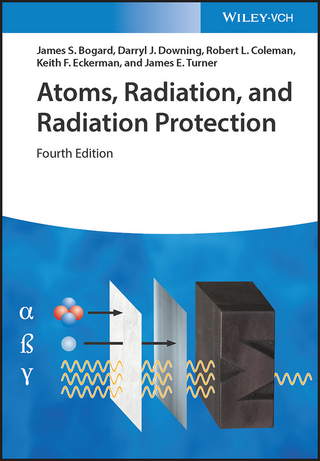
Evoked Potentials
Kluwer Academic Publishers (Verlag)
978-0-85200-255-1 (ISBN)
- Titel ist leider vergriffen;
keine Neuauflage - Artikel merken
The task of selecting material for this book, from the wealth of interesting work presented at the Symposium, was undertaken by a selection committee of distinguished authors who were the chairmen for the specialized sessions. To Dr F. W. Campbell, Professor S. J. Crews, Mr W. P. R. Gibson, Professor G. F. A. Harding, Dr D. A. Jeffreys, Dr D. G. Small, Professor H. Spekreijse, Dr A. Starr, Dr A. R. D. Thornton and Professor L. H. van der Tweel, I record my thanks.
A Background and Perspective.- 1 Evoked brain potentials: how far have we come since 1875?.- 2 Measurement of evoked potentials.- 3 The auditory evoked potentials.- 4 Pattern evoked potentials: principles, methodology and phenomenology.- 5 Somatosensory and spinal evoked potentials.- B The State of the Art.- Section 1 Evoked Potential Stimulus, Measurement and Analysis.- 6 Design effects of video pattern generators on the YEP.- 7 Laser speckle cortical evoked responses (LASCERs).- 8 VEP triggered by saccadic eye movement and produced by an afterimage.- 9 A modified mean-addition process for EEG EP observation.- 10 Quantification of the auditory evoked brainstem potential using a correlation procedure.- 11 Comparative frequency analysis of single EEG-EP records.- 12 Measurement of EPs during CNV task.- 13 Event-related desynchronization in parallel to VEPs.- 14 How to measure evoked EEG potentials for topography.- Section 2a Visual Evoked Potentials: Normative Studies.- 15 The nature of pattern VEPs.- 16 Hypothesis concernmg the most probable sites of origin of the various components of the pattern EP.- 17 Cortical potentials evoked by pattern presentation in the foveal region.- 18 The effect of temporal stimulus parameters upon the VEP.- 19 Non-visual influence on clinically applied VEP.- 20 The human VEP and steady-state psychophysical light adaptation functions.- 21 High temporal frequency VEPs to luminance and pattern stimulation in the peripheral retina.- 22 A comparison of occipital potentials evoked by pattern onset, offset and reversal by movement.- 23 The effect of various stimulus parameters on the lateralization of the VEP.- 24 Binocular interactions in the VEP using a modified synoptophore.- Section 2b Visual Evoked Potentials: Clinical Applications.- 25 VEP in neuro-ophthalmic disease.- 26 The response to pattern reversal in amblyopia.- 27 VEP and intraocular pressure.- 28 Ten years' experience of ERG/VEP/EEG studies on visual disorders in paediatrics.- 29 Electroretinogram, visual evoked cortical potential and the retinocortical activation time.- 30 VEPs from quadrantic field stimulation in the investigation of homonymous field defects.- 31 Abnormalities of the pattern VEP in patients with homonymous visual field defects.- Discussion.- Section 3a Auditory Evoked Potentials: Normative Studies.- 32 Derived cochlear and brainstem EPs.- 33 Early auditory EPs of the cat.- 34 Latencies of brain stem potentials and auditory thresholds.- 35 Inter-hemispheric and inter-aural differences in the human auditory EP.- 36 Time shift evoked potentials (TSEPs).- 37 Improvement of ERA by speech-specific stimulation and correction of amplitude and latency behavior.- 38 Comparison of auditory cortical EPs, brainstem EPs and postauricular myogenic potentials in normals and patients with known auditory defects.- Section 3b Auditory Evoked Potentials: Clinical Applications.- 39 Clinical electrocochleography: the significance of the summating potential in Meniers's disorder.- 40 Auditory EPs in ageing and dementia.- 41 Extra-tympanic electrocochleography in clinical use.- 42 Brainstem auditory EPs in chronic degenerative central nervous system disorders.- 43 Monitoring brainstem function during posterior fossa surgery with brainstem auditory EPs.- 44 Detection and localization of brainstem lesions with auditory brainstem potentials.- Section 4a Somatosensory Evoked Potentials: Normative Studies.- 45 Effects of specific spinal cord lesions on cortical somatosensory evoked potentials in the non-anaesthetized rabbit.- 46 Origin of the N11 wave of the cervical somatosensory evoked potential (CSEP) in man.- 47 Short and long latency cortical potentials following trigeminal nerve stimulation in man.- 48 The influence of trans- and percutaneous electrical nerve stimulation on somatosensory evoked potentials (SEPs) in man.- 49 Determination of the distribution of conduction velocities in peripheral nerve trunks.- Section 4b Somatosensory Evoked Potentials: Clinical Applications.- 50 Somatosensory evoked cortical potentials in peripheral nerve lesions.- 51 Somatosensory EPs in traction lesions of the brachial plexus.- 52 Somatosensory EPs in focal brain lesions.- 53 Clinical application of segmental somatosensory evoked potentials (SEP)- experience in patients with non-space occupying lesions.- 54 Comparative study of early and late somatosensory EPs in patients with hemiplegia and/or hemianaesthesia.- 55 The high amplitude somatosensory EP in progressive myoclonic epilepsy. Its relationship with the myoclonus-related cortical spike.- Section 5 Psychological Correlates of Evoked Potentials.- 56 Evoked potentials and signal detection: the influence of slow potentials.- 57 Temporal uncertainty and the recovery function of the auditory EP.- 58 Late positive component (LPC) during semantic information processing in Kanji and Kana words.- 59 Contingent negative variation (CNV) and extraversion in a psychiatric population.- 60 Slow cerebral potentials in a 'go-no go' avoidance situation: a study on special hospital patients.- Section 6 Drug and Metabolic Effects on Evoked Potentials.- 61 Cortical EP, blood flow and potassium changes in experimental ischaemia.- 62 Event-related potential changes with morphine in non-addicted humans.- 63 The use of event-related slow potentials of the brain as an objective method to study the effects of centrally acting drugs.- 64 The effect of sodium valproate on the photosensitive VEP.- 65 Correlations between VEPs and psychopathological findings in schizophrenic patients under treatment with various psycho- pharmacological drugs.- Section 7 Evoked Potentials in Multiple Sclerosis.- 66 The contribution of visual and somatosensory EPs and quantitative electro-oculography in the diagnosis of multiple sclerosis.- 67 Pattern reversal VEP after unilateral optic neuritis.- 68 VEPs during provoked visual impairment in multiple sclerosis.- 69 Brainstem auditory EPs on individuals with multiple sclerosis.- 70 Brainstem auditory EPs and blink reflex in quiescent multiple sclerosis.- 71 An approach to diagnosis of multiple sclerosis with cerebral EPs (visual, auditory, somatosensory).- Contributing Author Index.- Cited Author Index.
| Zusatzinfo | biography |
|---|---|
| Verlagsort | Dordrecht |
| Sprache | englisch |
| Maße | 150 x 230 mm |
| Gewicht | 1150 g |
| Themenwelt | Naturwissenschaften ► Physik / Astronomie ► Angewandte Physik |
| ISBN-10 | 0-85200-255-6 / 0852002556 |
| ISBN-13 | 978-0-85200-255-1 / 9780852002551 |
| Zustand | Neuware |
| Haben Sie eine Frage zum Produkt? |
aus dem Bereich


